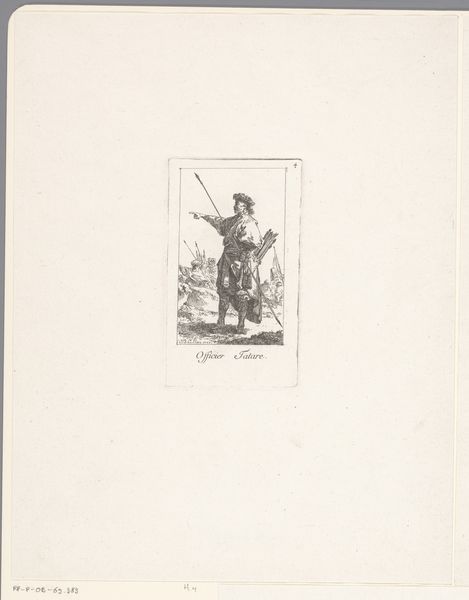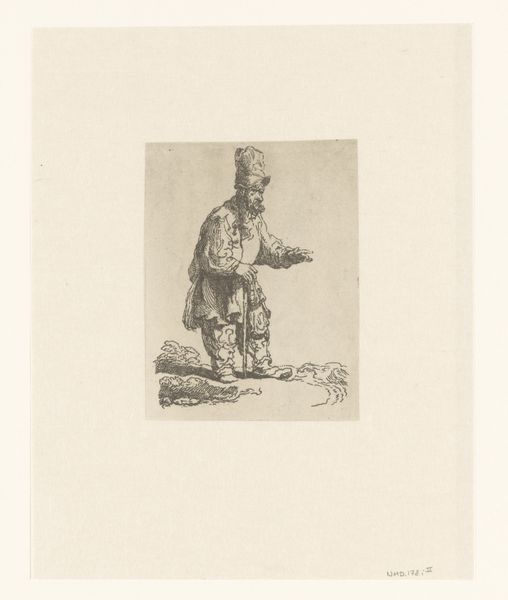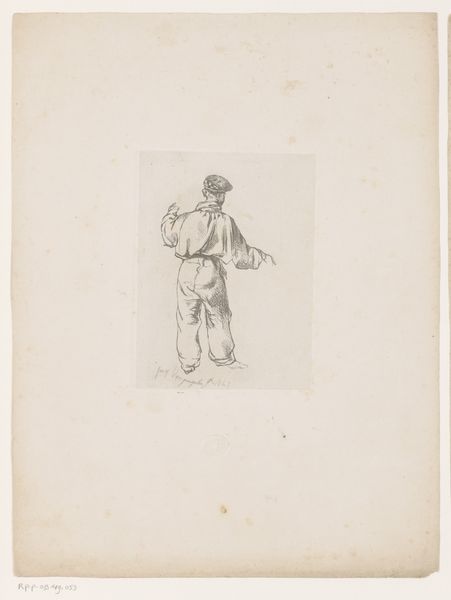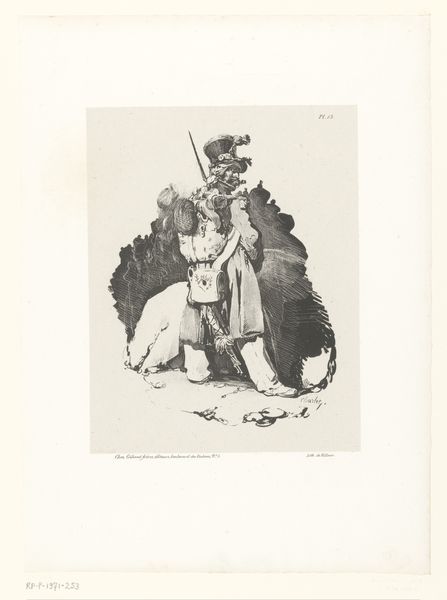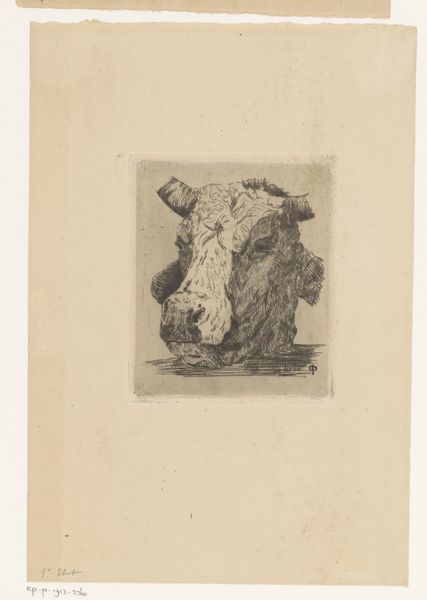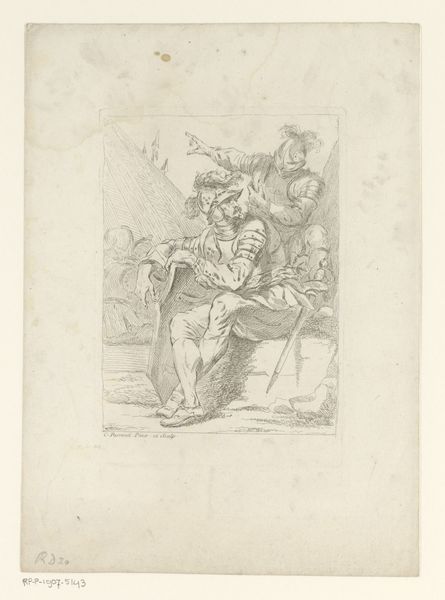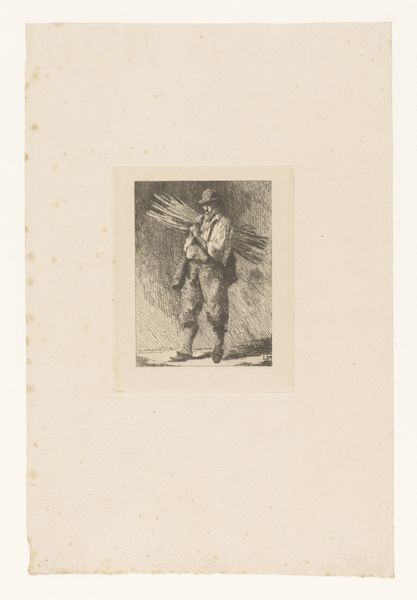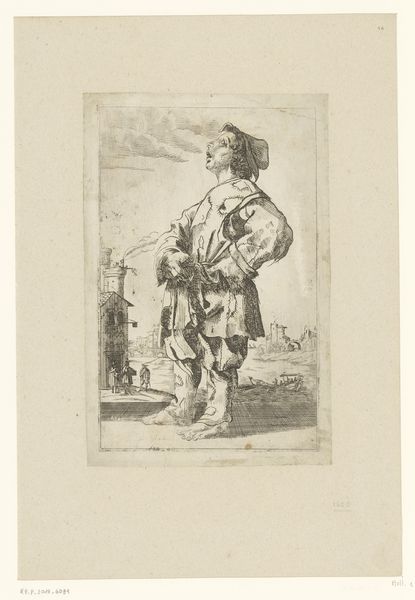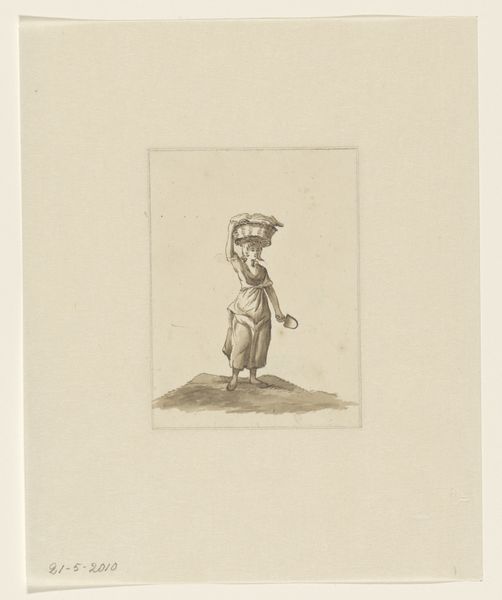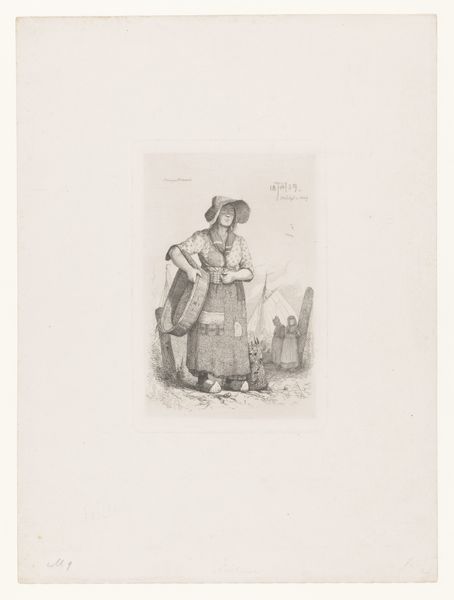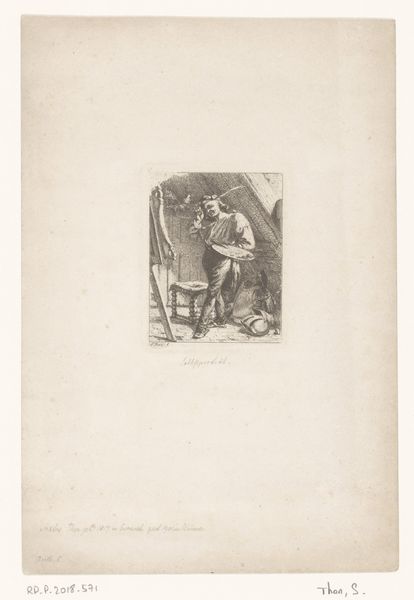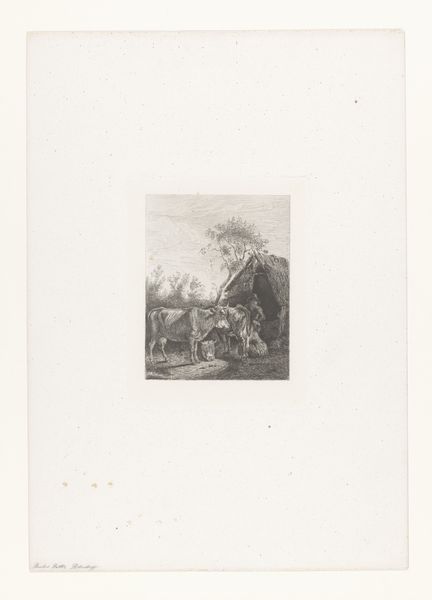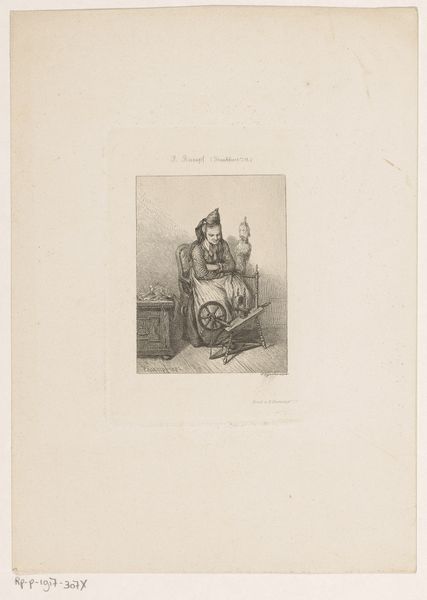
Dimensions: height 73 mm, width 42 mm
Copyright: Rijks Museum: Open Domain
Editor: We’re looking at "The Quacksalver," an etching by Léopold Flameng from 1859. The figure appears quite theatrical, almost comically so, given the detail in his costume relative to the more sketched background. What jumps out at you in this piece? Curator: The stark contrast between areas of dense hatching and open space defines the pictorial structure. Notice how Flameng utilizes the burr in the etched lines to create darker tones, drawing our eye to the figure’s face and hands, directing the viewer’s gaze. Editor: It's interesting that you focus on the lines. I see this work as being reminiscent of old master drawings. The artist really captured the exuberance in the character's expression through line and form alone. Curator: Indeed, Flameng demonstrates an economy of line. Note the diagonal emphasis conferred to the overall composition by his raised hand and the placement of shadows behind the figure, imbuing movement within a static, two-dimensional surface. It serves to activate the space, don’t you think? Editor: I agree, there's a tension between stillness and animation. Thanks, I’ve noticed much more looking at the composition and use of light and shadow. Curator: My pleasure. Attending to the interplay of form and space illuminates the intentionality within what may at first appear simply representational.
Comments
No comments
Be the first to comment and join the conversation on the ultimate creative platform.
